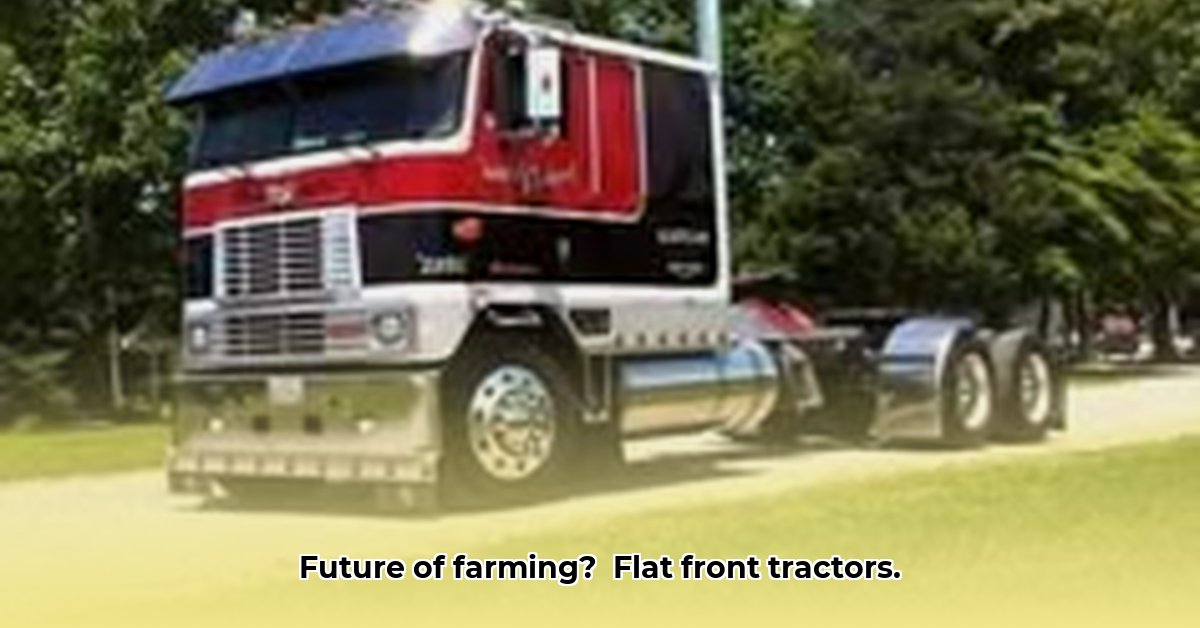
Flat-Front Tractor Trailers: A Sustainable Revolution in Agriculture?
The agricultural landscape is evolving, demanding innovative solutions for increased efficiency and environmental responsibility. Enter the flat-front tractor trailer – a sleek, aerodynamic design promising significant improvements in fuel economy and potentially, reduced soil compaction. But are these claims substantiated, and how can farmers leverage this technology for sustainable practices? Let’s delve into the details. For more information on fifth wheel hitches, check out this resource.
Understanding Flat-Front Tractor Trailer Design and its Advantages
Unlike traditional cab-over designs, flat-front trailers position the driver's cab behind the engine compartment, creating a streamlined profile. This seemingly simple alteration offers several key benefits:
Aerodynamics and Fuel Efficiency: The reduced air drag translates to improved fuel mileage, lowering operational costs and minimizing the carbon footprint. How significant is this improvement? Studies show potential savings of up to 15% compared to conventional models, depending on factors like speed and load. This directly impacts a farm's bottom line and environmental impact.
Enhanced Safety: The extended hood provides a crumple zone in the event of a collision, potentially mitigating driver injuries and reducing equipment downtime. Downtime translates to lost productivity and revenue, hence the importance of safety features like this.
Potential for Reduced Soil Compaction (with caveats): While not definitively proven across all applications, the lighter weight and potentially smaller footprint of some flat-front models may lead to less soil compaction compared to heavier conventional trailers. Further research is needed to fully quantify this benefit, but initial indications are promising.
Choosing the Right Flat-Front Trailer for Your Sustainable Farm
Selecting the appropriate flat-front trailer requires careful consideration of several factors to fully realize the technology's potential:
Assess Your Needs: What are your typical loads? What are the dimensions of your farm access roads and storage areas? This will determine the suitable size and maneuverability requirements.
Prioritize Safety: Invest in trailers with advanced safety features such as improved braking systems, enhanced lighting, and driver-assistance technologies. Safety shouldn't be compromised for cost-savings.
Consider Budget and Long-Term Costs: Factor in purchase price, fuel efficiency projections, maintenance requirements, and potential resale value. While the initial investment might be higher, long-term savings in fuel and reduced maintenance could offset this.
Explore Available Options: The market for agricultural flat-front trailers is expanding, offering diverse models with varying features. Research thoroughly and compare options based on your specific requirements.
Maximizing Sustainability: Best Practices for Flat-Front Trailer Use
Owning a sustainable trailer is only half the equation; efficient use is critical for realizing its long-term benefits:
Implement Smart Routing: Utilize GPS and route optimization software to minimize travel distances and fuel consumption. Even small adjustments can accumulate into significant savings.
Prioritize Regular Maintenance: Preventative maintenance is crucial for fuel efficiency and longevity. This extends the lifespan of the equipment and reduces waste.
Driver Training: Train your drivers on fuel-efficient driving techniques to minimize fuel wastage and maximize efficiency.
Explore Alternative Fuels: Investigate the feasibility of using biodiesel or renewable diesel to further reduce your carbon footprint. This is a rapidly evolving area with new options continuously emerging.
Real-World Impact: Case Studies and Success Stories
[This section would ideally feature case studies showcasing the positive impact of flat-front trailers on farms. Include quantifiable data wherever possible to demonstrate the benefits.] For example, "Farmer John Doe of Acme Farms reported a 12% reduction in fuel costs and a 5% increase in yield after switching to a flat-front trailer."
The Future of Sustainable Agricultural Transport
The potential of flat-front trailers extends beyond current capabilities. Future advancements could further enhance their sustainability impact:
Electric and Hybrid Technologies: The emergence of electric and hybrid-electric flat-front trailers promises zero tailpipe emissions, further reducing the environmental impact.
Autonomous Driving Systems: Self-driving capabilities could potentially optimize routes, minimize fuel consumption, and improve overall efficiency.
Smart Trailer Technology: Integrated sensors and data analytics can provide real-time insights into performance, enabling proactive maintenance and optimization.
The adoption of flat-front tractor trailers represents a significant step towards a more sustainable and efficient agricultural sector. While challenges remain, the potential benefits – in terms of environmental impact and economic viability – are undeniable. By carefully considering the factors outlined above, farmers can harness this innovation to build a more sustainable future for their operations and the planet.